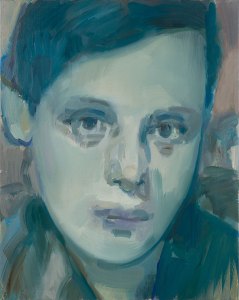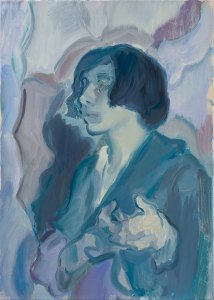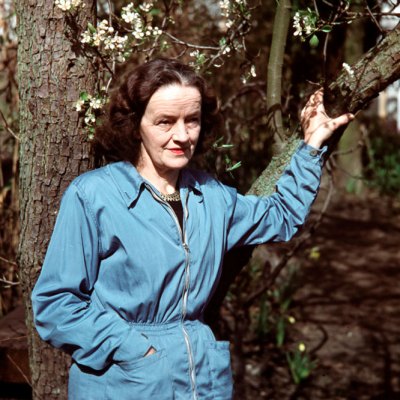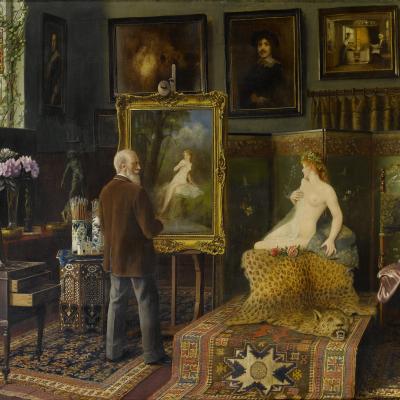Kaye Donachie is known for her ethereal, dream-like portraits of women inspired by real figures – often depicted alone, or sometimes as part of a small group. The Glasgow-born artist, who lives and works in London, is particularly interested in the women of 20th-century modernism, such as the poet and actress Iris Tree, who is portrayed in Monotonous Remorse (2019); the work was recently acquired by Pallant House Gallery. Donachie’s latest project is a series of paintings that reimagine the life of Maria Lani, an aspiring silent film star who sat for the likes of Matisse, Chagall and Braque in Paris; the works are currently on view at Lismore Castle Arts: St Carthage Hall (28 August–31 October).
Where is your studio?
I have recently moved back into Studio Voltaire in Clapham, London.
What do you like most about the space?
Over the last couple of years, the building has undergone a major architectural renovation, providing artists with studios that have great light, underfloor heating and fantastic communal areas. My favourite aspect of my studio is the quality of natural light that fills the space all through the day from the skylights.
How messy is your studio?
Before making any new work, I like the studio space to be very clean and orderly. It helps me think clearly. However, as soon as I am painting the studio gets progressively more chaotic as I can really only think about resolving images – rather than a tidy studio floor.
What does it smell like?
Very strong turpentine and oil paint. Although I don’t really notice that any more. It’s only when studio visitors mention it that I realise how strong the smell is.
The Wild (2021), Kaye Donachie. Courtesy Maureen Paley, London; © Kaye Donachie

What’s the most well-thumbed book in your studio?
Recently I bought an exhibition catalogue by Jean Cocteau titled Maria Lani, 51 portraits, 1929. Maria Lani alongside her husband came to Paris in the 1928. She met Cocteau and convinced him she was an established actress and was making a film with Thomas Mann called The Woman of a Hundred Faces. Cocteau encouraged modernist artists such as Matisse, Picabia, Man Ray to make portraits of Lani. The film never materialised and Lani disappeared to America. This story alongside the exhibition catalogue really informed my show at Lismore Castle in Ireland.
Do you pin up images of other artists’ works?
I like to look at things that relate to the work I am making at the time. When making work for the Lismore show I collected small images by Cocteau, including lines of his poetry, as well as work by other artists who created portraits of Maria Lani. I used these fragments to think about the particular atmosphere or emotive quality I would like to sense in my own work.
Do you cook in the studio?
I never cook but I might have a sandwich for lunch or anything that doesn’t take more than five minutes to eat. I can always see something out of the corner of my eye that I need to get on with.
What do you usually wear?
I have an old T-shirt dress that is really comfortable. Funnily enough, my painting T-shirt made an appearance out of the studio in the book What Artists Wear by Charlie Porter.
I Content Myself (2021), Kaye Donachie. Courtesy Maureen Paley, London; © Kaye Donachie

Do you ever sleep in your studio?
No, I can’t imagine doing that. Probably need to find the perfect chaise longue.
Who’s the most interesting visitor you’ve had to your studio?
Michael Bracewell came to the studio and it’s always great talking to him. He has such interesting stories and insights. I can honestly say though that it is always a pleasure when anyone comes to spend some time in the studio and chat over a cup of tea.
‘Kaye Donachie: Into the Thousand Mirrors’ is at Lismore Castle Arts: St Carthage Hall, until 31 October.



